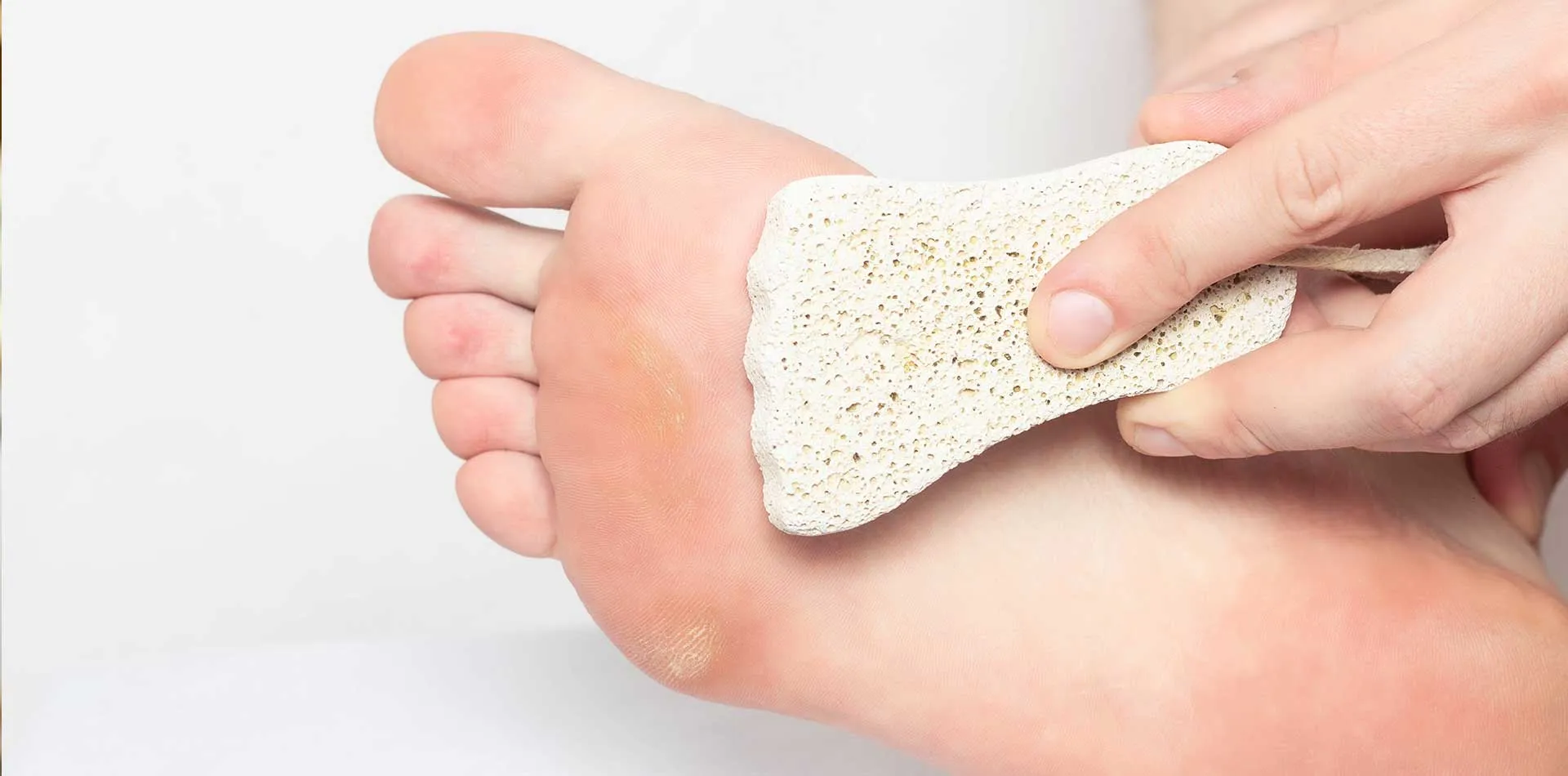
Corns and calluses may develop on the feet and toes or hands and fingers as thick, hardened layers of skin, which form when the skin tries to defend itself from friction and pressure.
In most cases, when you are healthy, treatments are not needed; simply eliminating the source of friction or pressure heals the corns and calluses. But when the condition is annoying and discomforting, it requires medical attention.
People with diabetes or another medical condition may cause poor blood flow in the feet, leading to a greater risk of complications from corns and calluses. Talk to the doctor to learn about proper care when you have such a condition.
You can identify corn or a callus when you notice a thick, rough area of skin, flaky, dry or waxy skin, a hardened, raised bump or tenderness or pain under your skin.
• Corns appear smaller than calluses, have a hard center surrounded by inflamed skin, and maybe painful when pressed. Corns happen on the feet in parts that don't bear weight - the top and sides of the toes or between toes. However, it may also appear in weight-bearing areas.
• Calluses, a rarely painful condition, develop on the soles of the feet, mainly the heels or balls and on the palms or the knees. Calluses differ in size and shape and are usually bigger than corns.
When corn or callus get very painful or inflamed, check with a doctor. For those with diabetes or poor blood flow, check with the doctor before self-treating corn or callus as a minor injury to the foot may lead to an infected open sore (ulcer).
Corns and calluses develop and grow, resulting from pressure and friction from repetitive actions. The factors that may cause pressure and friction include:
• Wearing wrong-fitted shoes - too loose or tight shoes or high heels may compress areas of the feet. Repeated rub against the shoe - a seam or stitch inside the shoe can lead to corns and calluses.
• Wearing shoes and sandals without socks may create friction on the feet. Socks that don't fit properly may also be a problem.
• Calluses on the hands can result from the repeated pressure of playing instruments, using hand tools or even writing.
These factors may raise the risk of corns and calluses:
• A bunion is an irregular, bony bump that develops on the joint at the base of the big toe.
• A hammertoe is damage in the toe curls, like a claw.
• Other foot malformations like bone spurs may cause constant rubbing inside the shoe.
• Working with hand tools without using gloves presents skin with excessive friction.
The following things can help prevent corns and calluses:
• Wear proper shoes that provide toes with plenty of room. When you can't wiggle the toes, then shoes are too tight.
• Use protective coverings like felt pads, nonmedicated corn pads or bandages over areas that rub against the footwear.
• When using hand tools, protect hands with gloves, or try padding tool handles with cloth tape or covers.
Patient Experience